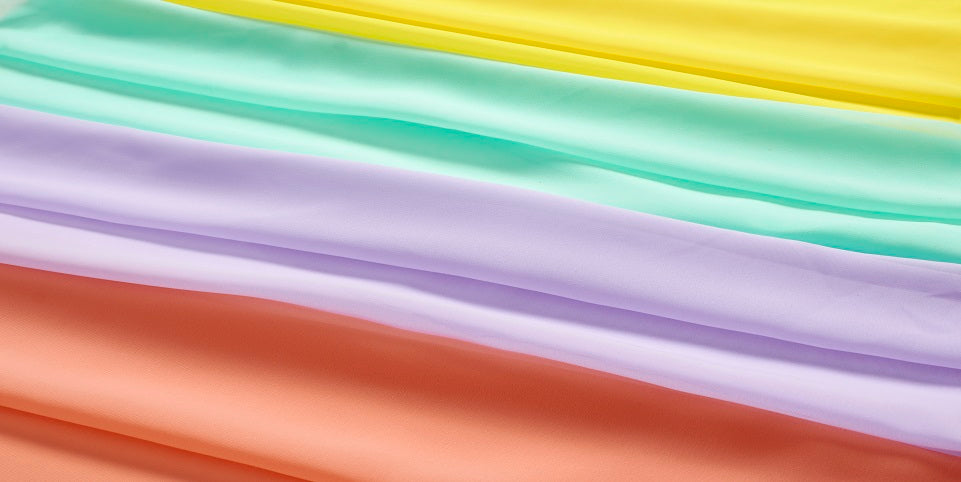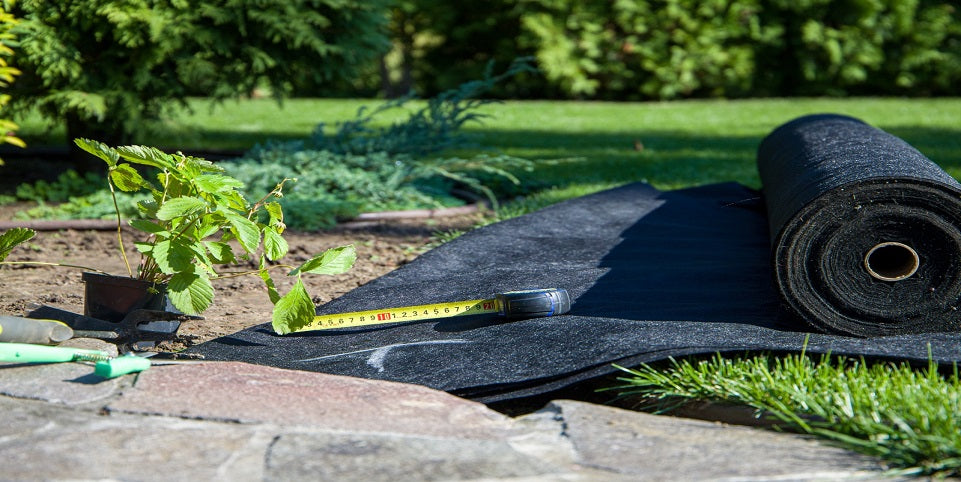Project Description
Sewing pants is not as hard as it may seem, even a beginner sewer can tackle this task. While it may sound complicated, sewing pants is easy and fun. In this step-by-step tutorial, you will learn how to sew a stylish, and comfortable pair of elastic waist pants that feature large side pockets. We will be using the Clyde Work Pant Digital Sewing Pattern from Elizabeth Suzann Studio. This pattern is offered on a “pay what you can basis,” – meaning that if your budget is tight, you can download the pattern for free, or at a reduced rate if that you choose.
Supplies
Here are the supplies needed to sew these fashionable pants.
- Clyde Work Pant Digital Sewing Pattern
- 2-4 Yards Medium Weight Fabric (check the patterns size instructions for an exact amount)
- Matching Thread
- Scissors
- Sewing Pins
- 1-2 Yards 2” Elastic
- Teflon Sewing Foot
- Sewing Machine
- Sewing Machine Needle
- Iron
- Printer
- Printing Paper
- Tape
Before You Start:
Before you begin, first download the pattern, and then print it out. Assemble the pattern by matching up the circles found along the sides of each the paper, and then tape them together. Next, prewash your fabric. After, cut out the two front panel pieces, the two back panel pieces, the two side panel pieces, the two pocket bag pieces, and the two 2 pocket facing pieces.
You’re now ready to start sewing!
How To Sew Pants: Work Pants
STEP 1 Finding The Pocket Pieces
Start by finding your two pocket facing pieces, and two side panel pieces.
STEP 2 Pinning The Pocket Pieces Together
Next, place one pocket facing, right sides together, with one side panel along the curved edge. Now, pin the pieces together.
STEP 3 Stitching The Pocket Facings To The Side Panels
Then, stitch the pocket facing to the side panel along the curved edge with a 3/8 inch seam allowance. When stitching, sew from the center to the left edge, then from the center to the right edge. This helps to prevent the curved edge from getting stretched out in one direction as you sew.
STEP 5 Clipping Along The Curve
Next, use your scissors to clip up to (but not through) your stitching along the curve. This step will help ensure the seam lay flat once it’s turned.
STEP 6 Pressing & Stitching
Press the pocket facing up, and away from the side panel. Make sure you, press the seam allowance towards the pocket facing. Now, stitch the seam allowance to the pocket facing, by sewing with a ¼ inch from the seam.
STEP 7 Flipping & Stitching
Next, flip the pocket facing to the wrong side, and press it into place. Additionally, press the curved edge as well.
STEP 9 Combining The Pocket Bags & Pocket Facings
Next, find the pocket bag pieces. Start by lining one pocket bag piece with one pocket facing, and ensure their right sides are together. Now, align the lower curved edge of the pocket bag piece and the pocket facing, and then pin them together. Make sure not to stick the pin through the side panel.
STEP 10 Stitching
After this is done, stitch the lower curved edge with a 3/8 inch seam allowance. Finish the raw edges, but only if you would like to as it is not necessary.
STEP 11 Finishing The Pockets
Next, line up the side edges of the pocket facing, pocket bag, and side panel. Now, pin them together.
STEP 12 Basting The Side Edges & Repeat
Lastly, sew the side edges together by using a long basting stitch. Be sure to leave a 3/8 inch seam allowance.
Repeat steps 9 for sewing the other pocket bag piece to the other side panel.
STEP 13 Pinning The Side Panels
First, lay one side panel on your table with its’ right side up. Place the left, front panel piece on top of the side panel with their right sides down. Make sure to, line them up along the edge without the crotch curve. Pin this edge in place.
STEP 14 Sewing The Front Panel To The Side Panel
Now, sew the left front panel piece to the side panel. Use a zig zag stitch or a serger with a ½ inch seam allowance to finish the edges.
STEP 16 Repeat
Repeat steps 13 to 15 to make the second side panel and front panel.
STEP 17 Stitching The Back Panel Pieces
Now lay one of the side panel/front panel pieces with their right sides up on your table. Place one of the back panel pieces with its’ right side down, on top of the side panel/front panel piece. Line up the side of the back panel, without the crotch seam, along the free edge of the side panel. Now Pin them in place.
STEP 19 Pressing & Topstitching The Back Panel & Side Panel
Next, press the seam allowance towards the back panel and away from the side panel with a clothes iron. Then, topstitch parallel to the seam, sewing ¼ inch from the seam down the entire length of the pant. Next, sew the topstitching on the back panel side of the seam. Sew through the back panel and seam allowance, but not through the side panel.
STEP 20 Repeat
Repeat steps 17 to 19, to sew the other back panel piece to the other side pane.
After completing the steps so far, you should now have two assembled pant legs.
STEP 21 Pinning The Front Crotch Pieces
Start by pinning the two front panel crotch curves together. Make sure to match up the pieces with their right sides together.
STEP 22 Sewing The Crotch Curve
Now, sew the front crotch curve with a ½ inch seam allowance. Finish the seam allowances with a serger or zigzag stitch.
STEP 23 Pressing & Topstitching
After, press the seam allowance towards the left side, then topstitch through the left leg along the crotch seam., sewing a ¼ inch from the seam.
STEP 24 Repeat
Repeat steps 21-23 for the back panel crotch pieces. Pin and sew the two back panel crotch seams together. Be sure to finish the seam allowances.
STEP 25 Pinning The Inseam
Start by aligning the inseam of the pants with their right sides together. Pin the inseam all the way from the left ankle, up to the left leg, across the crotch, down the right leg, and to the bottom of the right pant leg.
STEP 26 Stitching & Pressing The Inseam
Stitch the inseam with a ½ inch seam allowance. Next, finish the raw edges by using a zigzag stitch or serger. Lastly, press the seam allowance towards the back.
STEP 27 Marking The Folds
Start by lining up the center front, and center back seams along the waistline of the pants. Then, mark the location where the fabric folds to the left and right sides. This will evenly quarter the waistline of the pants when you are stitching the elastic.
STEP 28 Cutting The Elastic
Cut a length of elastic that is approximately 0.5 to 1 inch shorter than your waist measurement. Overlap the elastic ends by 3/8 inch, making sure there are no twists in the elastic loop. Stitch the overlapped ends together by sewing back and forth across the ends several times by using a zigzag stitch.
STEP 29 Folding & Marking
Next, fold the elastic in half, and mark the folds on either side with pins.
STEP 30 Lining Up The Pins
Then, line up the first two pins at the center of the elastic. Mark the new folds on either side with two new pins. This will help line the elastic evenly on the waistline.
STEP 31 Positioning The Elastic
Turn the pants right sides out. Push the elastic over the waistline so that the fabric sticks out a 1/8 inch above the elastic. Match up one pin in the elastic with the center front of the pants. Match another pin in the elastic with one in the center back of the pants. The remaining two pins should match with the right and left pins in the waistline of the pants. Next, pin the elastic to the waistline at these four points.
STEP 32 Stretching The Elastic
Next, stretch the elastic between the pins, adding more pins in between the existing ones to secure the elastic more firmly to the waistline.
STEP 33 Stitching The Elastic
Now, use a zigzag stitch or a serger to sew the upper edge of the elastic to the waistline of the pants. Make sure to stretch the elastic to fit as you sew. If you are using a serger, the serger blade can cut off the 1/8 inch of fabric that extends above the elastic. Be careful not to cut through the elastic.
STEP 34 Turning & Pressing The Elastic
After, turn the elastic up and away from the pants. Press the fabric along the waistline with your iron.
STEP 36 Checking The Pockets
Double check that each edge of the pockets are the same distance from the top of the waistline. Adjust the waistband if needed.
STEP 37 Sewing The Elastic
Once everything is pinned evenly, sew an 1/8 inch from the bottom edge of the elastic around the entire waistband. Make sure to evenly stretch the elastic between the pins as you sew. It may also help to stitch from the wrong side of the pants.
STEP 38 Sewing The Elastic, Continued
Next, sew two more parallel lines of stitching through the waistband. The first stitch should be approximately 1 & 5/8 inches from the top edge, and the second stitch should be 1 & 1/4 inches from the top edge.
STEP 40 Repeat
Repeat step 39 on the second hem.
 Transparent
Transparent
 White
White
 Pink
Pink
 Red
Red
 Orange
Orange
 Ivory
Ivory
 Yellow
Yellow
 Gold
Gold
 Brown
Brown
 Green
Green
 Blue
Blue
 Purple
Purple
 Grey
Grey
 Black
Black
 Multi
Multi
 Abstract
Abstract
 African Print
African Print
 Animal Print
Animal Print
 Baby & Nursery
Baby & Nursery
 Buffalo Check
Buffalo Check
 Camo Print
Camo Print
 Celestial
Celestial
 Chevron
Chevron
 Church
Church
 Damask
Damask
 Embroidered
Embroidered
 Floral
Floral
 Geometric
Geometric
 Gingham Check
Gingham Check
 Houndstooth
Houndstooth
 Licensed
Licensed
 Paisley
Paisley
 Plaid
Plaid
 Polka Dot
Polka Dot
 Sports
Sports
 Stripe
Stripe
 Tie Dye
Tie Dye









































1 comment
LC
Pattern is a flat fee of $22, not offered on a “pay what you can" basis.
Pattern is a flat fee of $22, not offered on a “pay what you can" basis.